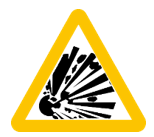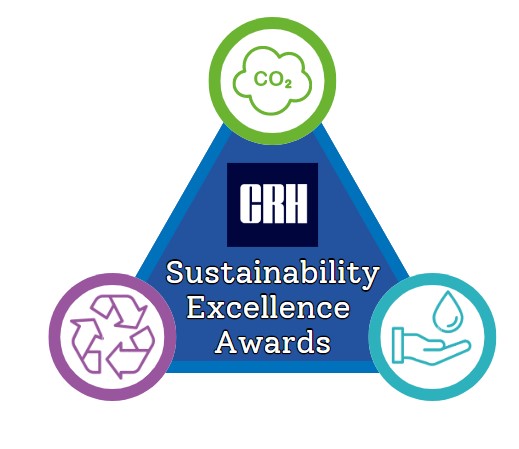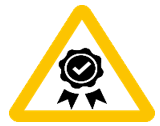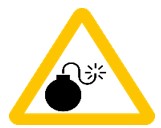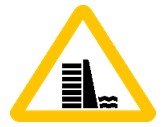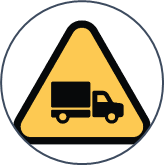Title Page
-
Site conducted
-
Conducted on
-
Prepared by
-
Location
Risk Category Standard - Process Safety
Responsibilities
-
Who is the Risk Owner of this risk category?
-
Who is the Control Owner of the risk category?
-
Who is the Risk Executer of this risk category?
-
Who is the Task Executers of this risk category?
Competencies
-
Is the Risk Owner trained and competent to manage this risk category?
-
Is the Risk Control Owner trained and competent to manage this risk category?
-
Are the Risk Exacters trained and competent to manage this risk category?
-
Are the Task Executers trained and competent to manage this risk category?
Appointments
-
Is the Risk Owner appointed to conduct his/her duties? (WAH Planner, risk assessor.....)
-
Is the Risk Control Owner appointed to conduct his/her duties? (WAH Planner, risk assessor.....)
Risk Management Requirements
-
Embed commitment to process safety. Leadership and operations discipline and culture, workforce involvement and compliance with standards are of utmost importance.
-
Ensure risk assessments are done. This includes process safety information (PSI) such as equipment data sheets and process drawings that must be updated, and process hazard analysis(PHA) that must be conducted by a competent authority.
-
Adhere to legislation that is in place to ensure that<br>hazardous chemicals are properly managed.
-
Design, maintain, install and/or modify process equipment using recognised and generally accepted good engineering practices, in accordance with established codes and standards. Follow the AECI, in-country or international engineering standards for example: American Petroleum Institute (API), American Society of Mechanical Engineers (ASME). This is<br>focused on the management level of the process equipment.
-
Design of plants and facilities must be inherently safe. Ensure asset integrity is maintained by conducting statutory inspections.
-
Ensure standard operating procedures, processes, safe work practices and technical data are in place and updated to ensure clear guidance are given to workers.
-
Ensure that all workers involved in any chemical process are trained, competent and authorised to do work involving the hazards of the process, emergency operations and other<br>practices that apply to the worker’s job.
-
Monitoring of all process safety measurement and metrics at a frequency prescribed by in-country legislation and/or the manufacturer’s recommendations to enable performance<br>assurance.
-
Adhere to the management of change (MOC) process whende sign and/or modification of process equipment is conducted, all plant changes must be authorised.
-
Ensure emergency preparedness and response plans are in place to mitigate incidents.
-
Ensure contractors and sub-contractors are competent for the work that needs to be done as per the AECI Contractor Management Standard and business unit procedures.
-
Conduct incident investigations, management reviews and process safety auditing and learnings must be shared.
-
Refer to the High-risk machinery and equipment,<br>Electricity, Explosives, Non-process fires risk category standard if the work includes anything relevant.
Minimum Critical Controls
-
Are pre-startup safety review (PSSR) conducted when commissioning and starting up process equipment as well as visual checks to continuously ensure process safety.
-
Are safe work practices been applied by conducting positive isolation, lock-out and tag-out and obtaining a Permit to Work to ensure that the process equipment to be worked on is safe for the execution of maintenance.
-
Ensure trip functions, interlocks and/or emergency shutoff devices (ESD) are in place and effective where applicable.
-
Detection and suppression devices must be in place and operational where applicable.
-
Ensure earthing and bonding is effective to prevent static electricity build-up.
-
Are ignition source control been applied where applicable.
-
Are emergency and spill containment response as per risk assessment been conducted.
Pre-Startup Safety Review
-
Always adhere to the PSSR operational readiness standard.
-
Ensure that all permits have been signed off, prior to starting the equipment.
-
Test all the trip functions and interlocks before starting up a plant.
-
Confirm that the material of construction and the installation of equipment<br>is as per design.
-
Conduct plant inspection to confirm that equipment is ready for start-up.
-
Confirm if emergency alarms have been put back in place and functional before plant starts up.
-
Obtain mechanical, instrument and electrical clearance for operation before starting up the plant.
-
Confirm that gas, vapour cloud, foam, fire detection or/and suppression systems are in place and functional before plant starts up.
Trip Functions, Interlocks and Emergency Shutoff Devices
-
Trip functions must be designed, installed and maintained in accordance with<br>recognised and generally accepted good engineering practices (RAGAGEP).
-
Trip functions must be tested and maintained periodically as per manufacturer’s<br>recommendation and maintenance strategy, by a competent person.
-
Trip functions must never be bypassed without authorisation and evaluation<br>of associated risks.
-
Trip functions must be tested prior to plant start-ups and commissioning<br>of new systems – refer to PSSR control standard.
-
Never modify trip functions without following the change management<br>procedure (MOC).
-
Emergency shut off devices must be protected against environmental<br>influences such as physical impact, chemical attack, dust or water ingress.
-
Critical trip functions must be connected to a UPS or voltage conditioner,<br>in the event of a power failure or power surge.
-
Spares must be available for critical trip functions.
-
Are all trips functions and switch functions that are defective report and action
